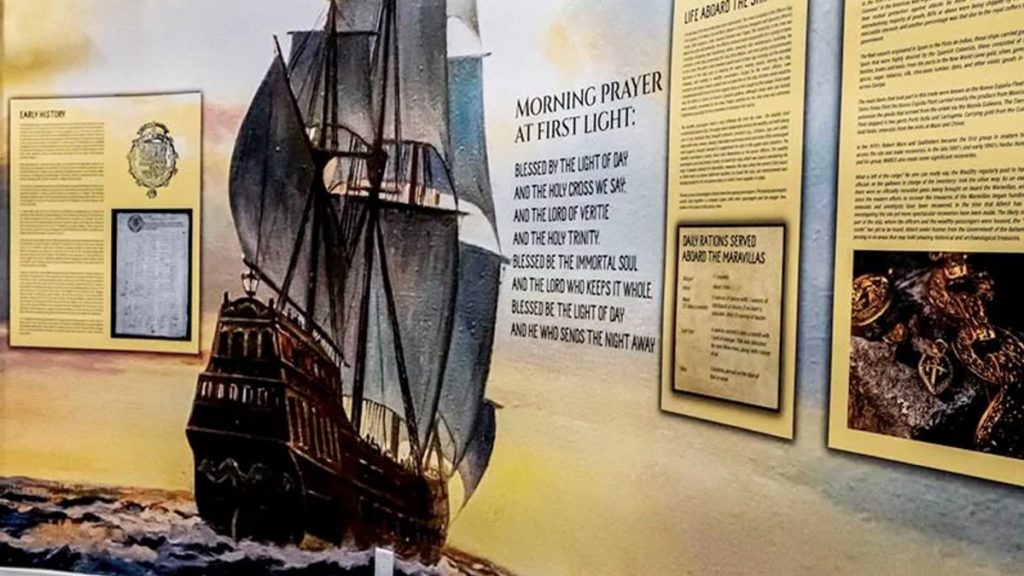Considering that the Caribbean is a region defined by water, there are surprisingly few museums in the region devoted to the importance of the sea to the Caribbean’s history, development, and the lives of its people.
The new Bahamas Maritime Museum dives deep into everything from free diving to sunken treasure, piracy, and the lives of sailors at sea, adding a welcome new attraction to attention-starved Freeport, Bahamas.
Funded by Carl Allen, a sports fishing enthusiast who is currently redeveloping the fishing resort of Walker’s Cay, northeast of Grand Bahama Island, the Bahamas Maritime Museum opened in August 2022 in Freeport’s Port Lucaya Marketplace. The location in the heart of Grand Bahama Island’s top hotel district makes the museum a natural stop for island visitors, who can explore nearly 4,000 square feet of exhibits, highlighted by artifacts recovered from the wreck of the Spanish galleon Nuestra Señora de las Maravillas, sunk with its rich cargo of treasure in the Bahama Channel in 1656.
Allen himself led the high-tech expedition by Allen Exploration that recovered a treasure trove of artifacts from the Maravillas, despite the fact that the remains of the wreck had been picked over repeatedly through the centuries.
The galleon was carrying a double load of gold and silver — its own, plus that salvaged from another ship that has sunk — when it departed from Colombia, and when it hit a treacherous reef, it sunk like a stone. Of the 650 people onboard, only 45 survived the shipwreck. Between the Spanish government and treasure hunters, most of the precious metal was later recovered, including more than 3.5 million Spanish Pieces of Eight.
The museum is a portal into maritime life and practice: stone ballast, iron hull fasteners, rings and pins, food jars, plates and dishes, and pieces of a navigational astrolabe.
But Allen Expeditions also raises some genuine sunken treasure, including silver and gold coins, emeralds and amethysts, a soldier’s silver sword hilt, a pearl ring, and pendants worn by knights of the Order of Santiago.
The Maravillas is just part of the story told at the museum, however.
Also on display at the Bahamas Maritime Museum are exhibits detailing the explorations of the seagoing Lucayan people, and the suffering of captured African people forced to make the journey through the Middle Passage during the slave trade.
Apart from the exhibit hall, the museum includes classroom space, a library, and a lab used for the ongoing exploration of the Maravillas wreck.
The museum is open Monday-Saturday from 10 a.m. to 4 p.m.







